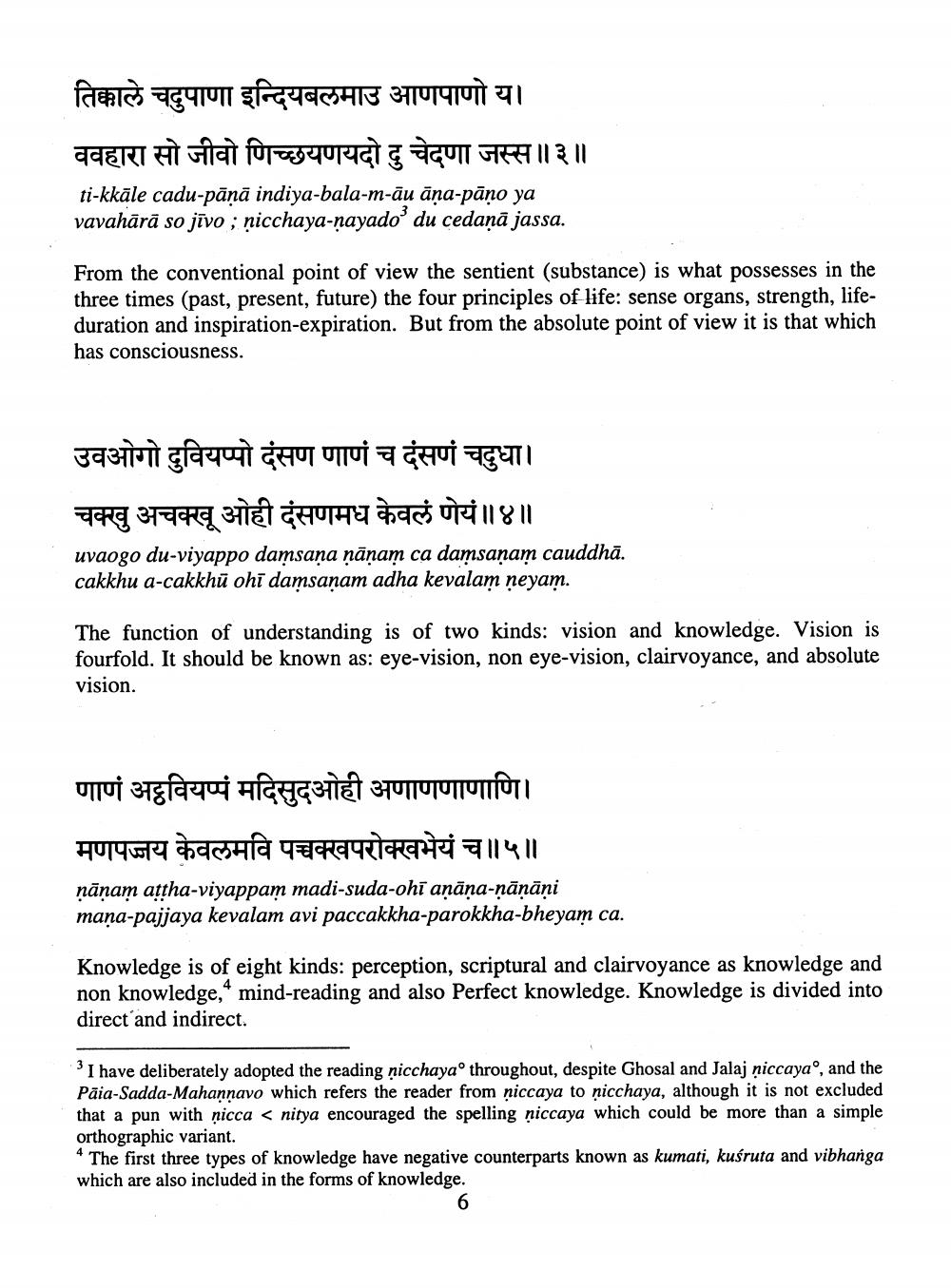Book Title: Dravya Samgraha Author(s): Nalini Balbir Publisher: Hindi Granth Karyalay View full book textPage 8
________________ तिक्काले चदुपाणा इन्दियबलमाउ आणपाणो य। ववहारा सो जीवो णिच्छयणयदो दु चेदणा जस्स॥३॥ ti-kkāle cadu-pāņā indiya-bala-m-āu āņa-pāņo ya vavahārā so jīvo ; ņicchaya-nayadoo du cedaņā jassa. From the conventional point of view the sentient (substance) is what possesses in the three times (past, present, future) the four principles of life: sense organs, strength, lifeduration and inspiration-expiration. But from the absolute point of view it is that which has consciousness. उवओगो दुवियप्पो देसण णाणं च दंसणं चदुधा। चक्खु अचक्खू ओही दंसणमध केवलं णेयं ॥४॥ uvaogo du-viyappo daņsaņa ņāņam ca daņsaņam cauddhā. cakkhu a-cakkhū ohi damsanam adha kevalam neyam. The function of understanding is of two kinds: vision and knowledge. Vision is fourfold. It should be known as: eye-vision, non eye-vision, clairvoyance, and absolute vision. णाणं अट्ठवियप्पं मदिसुदओही अणाणणाणाणि। मणपज्जय केवलमवि पच्चक्खपरोक्खभेयं च॥५॥ nānam attha-viyappam madi-suda-ohi anāna-nānāni mana-pajjaya kevalam avipaccakkha-parokkha-bheyam ca. Knowledge is of eight kinds: perception, scriptural and clairvoyance as knowledge and non knowledge, mind-reading and also Perfect knowledge. Knowledge is divided into direct and indirect. I have deliberately adopted the reading nicchayao throughout, despite Ghosal and Jalaj niccayao, and the Pāia-Sadda-Mahannavo which refers the reader from niccaya to nicchaya, although it is not excluded that a pun with nicca < nitya encouraged the spelling niccaya which could be more than a simple orthographic variant. The first three types of knowledge have negative counterparts known as kumati, kuśruta and vibhanga which are also included in the forms of knowledge.Page Navigation
1 ... 6 7 8 9 10 11 12 13 14 15 16 17 18 19 20 21 22 23 24 25 26 27 28
